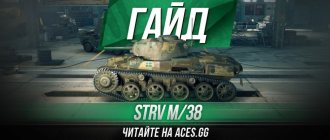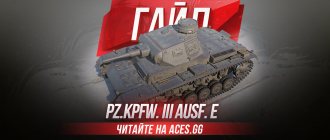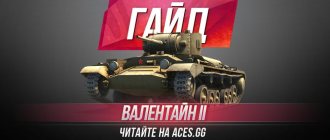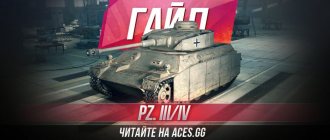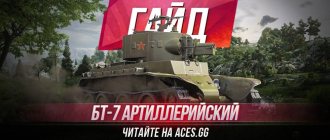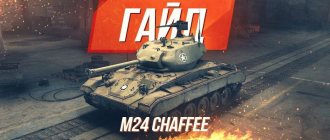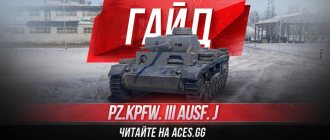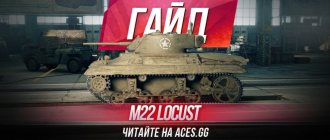Lehky tank LT vz. 35
Light tank LT vz.35.A light tank developed by Skoda in 1935. It was in service with the Czechoslovak Army under the designation LT vz. 35. The LT vz.35 tank belonged to the same class of combat vehicles as the Soviet T-26 and the Polish 7TR. Its purpose is quite difficult to formulate, especially within the framework of the Czechoslovak army - it is reconnaissance, direct support for infantry and cavalry, and independent actions. During the period from 1936 to 1938, Skoda and CKD produced 298 tanks.
Tank LT vz.35 from the 3rd Tank Regiment of the Czechoslovak Army. Central Slovakia, 1937
Tanks LT vz.35 on maneuvers of the Czechoslovak army. 1937 (right and bottom)
DESIGN AND MODIFICATIONS
The hull and turret were riveted and assembled on a frame made from angles. Armament: 37 mm vz.34UV cannon and two heavy 7.92 mm ZB vz.37 machine guns from Ceskoslovenska Zbrojovka Brno, one in the hull, the other in the turret. The turret machine gun could be aimed both in conjunction with the gun and independently of it. Horizontal guidance was carried out using the gun's shoulder rest or using a rotating mechanism. Ammunition: 78 rounds and 2700 rounds. On the roof of the tower there was a commander's cupola with a hinged dome-shaped lid. Combat weight 10.5 tons. Crew 3 people. Radio station vz.35 with a range of 2 km and the ability to operate only in telegraph mode.
By the start of mass production of the LT vz.35 light tanks, the tank forces of the Czechoslovak Army consisted of three tank regiments. Of the 298 LT vz.35 released, the 1st Tank Regiment received 197 units, and the 2nd – 49. All LT vz.34 tanks were concentrated in the 3rd Tank Regiment.
After the Germans occupied the Czech Republic and Moravia in March 1939, they captured and commissioned the Panzerwaffe 244 LT vz tanks. 35. Considering that the main weapon of the Wehrmacht at that time was the light tank Pz. II, and the more powerful Pz. III and Pz. IV were produced by industry in minute quantities, this is understandable. The LT vz.35 was significantly superior to German light (and even medium Pz. III) tanks in terms of armament, while not inferior to them in maneuverability and armor protection. In the Panzerwaffe, the tank received the designation Pz.Kpfw.35(t), or more simply - Pz.35(t): the German word tschechisch - Czech - begins with the letter “t”. This letter was placed in brackets after the designations of all types of Czechoslovak weapons and military equipment adopted by the Wehrmacht.
Tank Pz.35(t) of the 6th Panzer Division of the Wehrmacht moves through the territory of the Lithuanian SSR. 1941
The tanks were slightly modified to meet German army standards. The Germans installed their Fu 2 or Fu 5 radio stations on them, which worked in telephone mode, and also replaced the rather primitive internal lamp alarm with a tank intercom. Due to the reduction in ammunition, a fourth crew member was introduced - a loader. The Scintilla magneto was replaced with a “Bosch” one, a Notek blackout headlight, and marker and convoy lights adopted by the Wehrmacht were installed. Fuel cans were placed in the rear of the tank, on the fenders and the roof of the MTO. Some of the vehicles were converted into command vehicles, designated Pz.Bef Wg,35(t). The company commanders' tanks received a second radio station (Fl" 7) with a whip antenna, to accommodate which the installation of a front-line machine gun was eliminated. Its embrasure was covered with a round armor plate. The tanks of the battalion commanders and the vehicles of the regimental headquarters received an additional Fu 8 radio station with a loop antenna mounted in the rear of the hull. The only turret armament on these tanks was a machine gun.
Column of Pz.35(1) tanks. Eastern Front, summer 1941
Tank Pz. 3S(t) on the march. In the background is a Soviet medium tank T-28 abandoned by the crew. June 1941
The gun was dismantled and replaced with a wooden model. All command tanks were equipped with a gyrocompass. In total, the Germans converted about 20 Pz.35(t) linear tanks into this version.
During the spring of 1939, intensive training was carried out for German crews who mastered the Pz.35(1) tanks, which arrived both from former Czechoslovak warehouses and from enterprises where they were repaired and re-equipped. By the end of the summer, the 1st Tank Regiment and the 65th Tank Battalion were fully equipped with materiel, including headquarters units and reserves. The 65th battalion became part of the 11th Tank Regiment as its third battalion, and the regiment itself became part of the 1st Light Division of the Wehrmacht. On the eve of the Polish campaign, this formation had 112 Pz.35(t) and eight Pz.Bef.Wg,35(t) tanks, as well as 65 Pz.II and 41 Pz.IV. After the Polish Company, the 6th Tank Division was deployed on the basis of the 1st Light Division.
A unit of the 6th Panzer Division of the Wehrmacht passes through a Lithuanian village. June 1941
Red Army soldiers inspect a damaged German tank Pz.35(t). June 1941
On June 1, 1941, the Wehrmacht had 198 tanks of this type, of which 11 were under repair. The combat units deployed on the Soviet border had 149 tanks. The 6th Panzer Division was part of Army Group North and was advancing in the Leningrad direction. In September she was transferred to the Moscow direction, where she reached Klin. In the Russian winter, the Pz.35(t) tanks had a hard time: they completely froze, for example. pneumatic servo drive for gearbox control. The number of these combat vehicles has been steadily declining. On December 10, 1941, the last Pz.35(t) on the Eastern Front was shot down. These tanks were no longer used in combat units, but were used only as training tanks; 49 linear tanks were converted into artillery tractors. The dismantled towers were installed on fortifications in Denmark, as well as on the coast of France, in addition, they were used to arm armored trains.
Light tank R-2 from the Great Romania division near Stalingrad. November 1942
Slovak officers inspect the LT vi.35 tank, hit by Soviet artillery. Eastern Front, July 1941
In addition to the German army, LT vz.35 tanks were in service with the Romanian army, and some of these 126 vehicles were manufactured at Skoda factories, and some were produced in Romania under license. Unlike the Czechoslovak version, these tanks - R-2 - had a simplified manufacturing technology (the bent turret rear plate, for example, was replaced by two straight ones). In 1942, Romania purchased 26 Pz.35(t) tanks from the Germans. Almost all Romanian R-2s were part of the 1st Panzer Division "Greater Romania". They took part in the fighting on the southern flank of the Soviet-German front, in particular in the battles near Odessa, and met their end at Stalingrad. In 1943, the Romanians converted 21 vehicles of this type into TASAM R-2 self-propelled artillery units armed with captured Soviet 76-mm F-22USV and ZIS-Z cannons.
After the occupation of the Czech Republic and Moravia, the LT vz.35 was also received by the Slovak army, in which they took part in battles on the Eastern Front against the Red Army, and during the days of the Slovak National Uprising in 1944 - in battles with the Germans. Several tank turrets were installed on the armored cars of the Slovak armored train.
Captured tank Pz.35(t) at the training ground in Kubinka. 1948. Unfortunately, this car has not survived to this day.
Bulgaria, which also showed interest in this tank, was able to receive the first 26 vehicles only in 1940, already from the Germans. Attempts to acquire additional tanks were not met with enthusiasm from the German ally. And then they remembered the T-11 tanks from the Afghan order, standing peacefully in the company’s warehouse. In 1941 they were transferred to Bulgaria.
These 10 cars had a different theme than all the others.
that they were equipped with 37-mm A-7 cannons intended for the LT vz.38 tank. In 1944, after Bulgaria entered the war against Germany, T-11 tanks took a limited part in battles with the Germans in Yugoslavia and performed well. The specifics of combat in the mountains, in particular the short range of a direct shot, equalized the chances when meeting with more modern German tanks. Czech tanks remained in service with the Bulgarian army until the early 1950s. Back in 1948, Skoda was fulfilling an order for spare parts for them. TACTICAL AND TECHNICAL CHARACTERISTICS OF THE TANK Pz.35(t)
COMBAT WEIGHT, t: 10.5. CREW, people: 4.
OVERALL DIMENSIONS, mm: length – 4900, width – 2055, height – 2370, ground clearance – 350.
ARMAMENT: 1 KwK 34(t) cannon of 37 mm caliber, two MG 37(?) machine guns of 7.92 mm caliber. B
COMPLETE SET: 72 shots, 1800 rounds.
AIMING DEVICES: telescopic sight.
RESERVATION, mm: forehead – 25; side and stern – 16, roof and bottom – 8; tower – 8 – 25.
ENGINE: Skoda T-11/0, 4-cylinder, carburetor, in-line, liquid cooling; power 120 HP (88.2 kW) at 1800 rpm, displacement 8620 cm³.
TRANSMISSION: multi-disc main dry friction clutch, three-stage planetary gearbox, two-stage range, planetary turning mechanisms. The transmission had a pneumatic control drive and provided the tank with 6 forward and 6 reverse speeds,
CHASSIS: eight support rollers on board, interlocked into two bogies, suspended on leaf springs, three support rollers, a thrust roller, rear drive wheel; each caterpillar has 111 tracks 320 mm wide, track pitch 95 mm.
MAXIMUM SPEED, km/h: 34.
POWER RESERVE, km: 160.
OBSTACLES TO OVERCOME: ascent angle, degrees. – 41; ditch width, m – 2; wall height, m – 0.8; ford depth, m – 0.9.
COMMUNICATIONS: radio station Fu 5.
Table of contents
Advantages and disadvantages
In order to fully understand a tank, to be able to play it from a position of strength, that is, to realize the vehicle’s potential as efficiently as possible, it is necessary to have a clear understanding of its strengths and weaknesses. For this reason, we will now highlight the most significant strengths and weaknesses of the Pz.Kpfw. 35 (t) WoT
, and for ease of understanding we will break everything down point by point. Pros: • Good viewing range; • Decent safety margin for LT-2; • Excellent dynamics and maneuverability; • Good damage per minute; • Very fast mixing; • Comfortable vertical aiming angles. Cons: • Weak armor; • Tall and long silhouette; • Mediocre top speed; • Low one-time damage; • Penetration leaves much to be desired; • Poor accuracy (spread and stabilization).
Equipment for Pz.Kpfw. 35(t)
By installing additional modules, we can reduce the impact of some shortcomings, as well as improve the existing strengths of the machine. In our case, we will pursue both goals, which means that the Pz.Kpfw. 35 (t) equipment
It’s better to set the following: 1. – this is the best choice of all available, because we get a boost to several important characteristics at the same time. 2. – the second most important module, which will improve our already good visibility, thanks to which we will gain a tangible advantage over many opponents. 3. – of course, the aiming speed at our disposal is already good, but by improving it, you will be able to deal damage more effectively.
And for those who have enough basic information, there is a good replacement for the third option - this is MASKNET, with which the camouflage coefficient will increase, that is, playing passively, you will be able to cause damage without even getting caught, or you will have the right to the first shot.
Tactics of playing Pz.Kpfw. 35(t)
To confidently play on this German miracle of technology, as well as on any other vehicle in our game, you need to be able to use the strengths of the tank and neutralize its shortcomings. Of course, this sounds simple, but in reality everything is more complicated and it must be said that for the Pz.Kpfw. 35(t)tactics
fighting requires caution.
As you already know, our armor is weak, the safety margin is not that large, and for this reason it was not in vain that we chose a conventional gun, because it allows us to fire from afar. For greater safety, the German light tank Pz.Kpfw. 35(t)
can take a position on the second line, from where he can inflict damage with impunity on his own and allied light, because it will be difficult to detect him.
Of course, standing in the bushes on the second line, a player with Pz.Kpfw. 35 (t) WoT
should always come to the end, learn to check the lead, and also always monitor the mini-map, because close combat is contraindicated for us and then the enemy approaches, you can retreat or kill him on the way.
If you want to play more actively and are not interested in standing in the bushes, you will have to show cunning, ingenuity and dexterity. Maximum speed of Pz.Kpfw. 35(t) tank
received a low rating, but it has good dynamics and maneuverability, which can and should be used. You can quickly lean out of cover, take a shot and instantly retreat, in which case the enemy will most likely miss, and you can hit the target.
This technique can be used very often, hiding behind a house, an embankment, some cobblestone, or leaning out from behind a hill, using good vertical aiming angles, you just need to get used to it. Otherwise Pz.Kpfw. 35 (t) World of Tanks
must act according to the situation, fearing artillery, clashes with a superior number of opponents, and also fearing formidable guns with a powerful alpha or dangerous drums.


